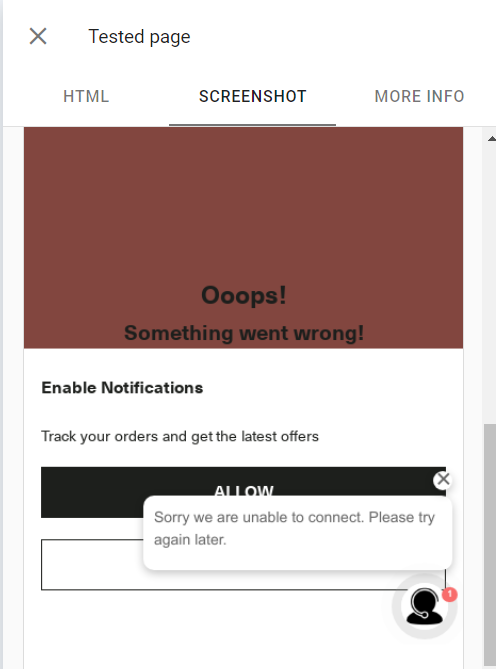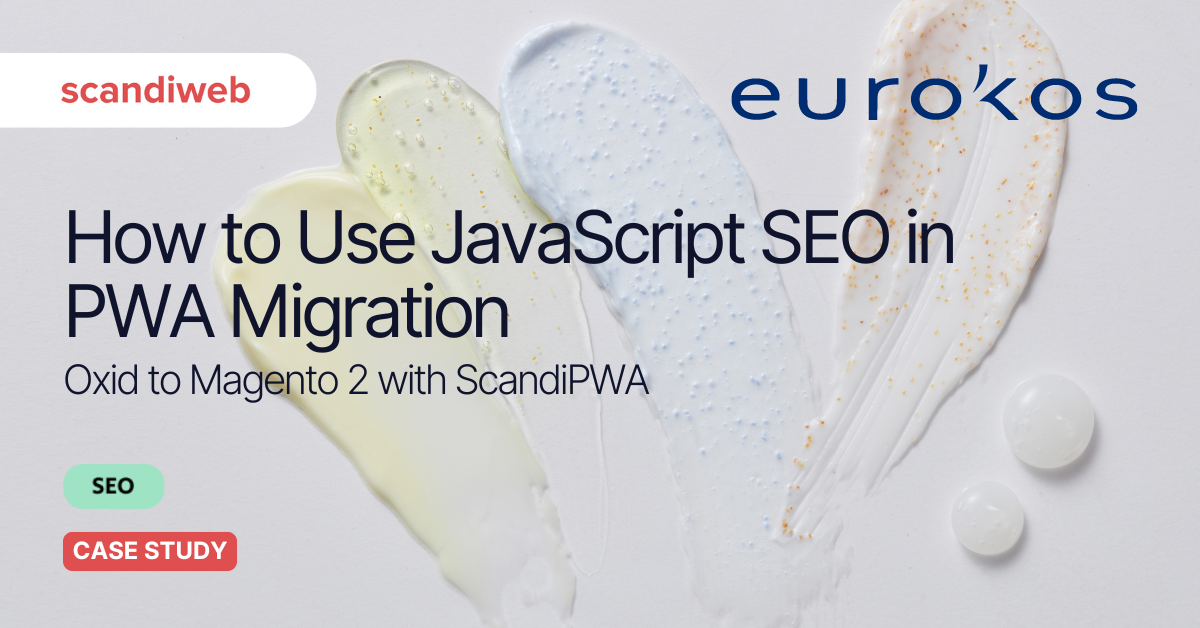
About
Eurokos is one of the leading cosmetics and beauty products chains in Lithuania. The brand competes with international names like Douglas and Notino, offering a diverse range of cosmetics, hygiene products, and supplements and operating an eCommerce and 119 physical stores nationwide.
Eurokos’ goal was to migrate their eCommerce store from Oxid to Magento 2 with ScandiPWA frontend to improve the website design and user experience.
Also read:
How scandiweb Migrates from a Legacy eCommerce Platform to Magento
Challenge
Any migration to PWA (Progressive Web App) websites poses many challenges for SEO, primarily due to search engine bots’ limited ability to read JavaScript. Therefore, this migration required the application of all the best JavaScript SEO practices to ensure the website is accessible, crawlable, and indexable.
Although the main challenge was the migration itself, other requirements increased the project’s complexity:
- New category pages, blog pages, image URL structure
- Selecting a pre-rendering solution to guarantee the content is fully fetched by bots
- Implementing an SEO-friendly pagination approach.
Approach
Given these challenges, we focused our strategy on technical SEO using JavaScript SEO as our main leverage.
Our approach to guarantee a successful migration and preserve the organic traffic and revenue included the following steps:
- Selecting a pre-rendering solution
- Performing a technical SEO audit and fixing identified issues
- Implementing JavaScript SEO best practices
- Creating and uploading redirects
1. Choosing a pre-rendering solution
Even though Googlebot and Bingbot can partially render JavaScript websites, relying only on their abilities is not wise.
Loading JS files can take a long time, and search engine bots plan a limited crawl budget for each website. In the unfortunate event that the page takes longer to load than the planned crawling time, bots stop the page rendering. As a result, the page may appear broken or its content partially cached.

Pre-rendering solutions are essential to mitigate such situations and have complete control over the page content shared with search engine bots.
For Eurokos case, we decided to opt for our in-house solution, Rendy.JS, which:
- Pre-caches pages for bots
- Provides pre-rendered caches to bots upon request
- Allows for customizable cache refresh intervals
- Sets different refresh intervals based on page status codes to optimize cache management, such as reducing the refresh frequency of pages returning a 301 or 404 status code.
Despite the option to set different cache refresh intervals, on big eCommerce sites like Eurokos, prices change daily; hence, the product page cache needs to be refreshed promptly to avoid search engines cloaking claims.
To meet Eurokos’ needs, we installed a tool that expedites cache updates for pages with frequently changing content, ensuring that up-to-date caches are always available to bots.
2. Performing a full technical SEO audit
We perform a full technical SEO audit for any migration to highlight and fix the new environment’s criticalities. In this phase, we conducted more than 150 checks, including investigation of these crucial areas:
- Internal errors (404s, 500 errors)
- Page rendering
- Page indexation rules (canonical tags and meta robots)
- Page accessibility to avoid cloaking issues
- Images, content, and metadata migration
- Schema markup implementation
- XML sitemap generation
3. Implementing JavaScript SEO best practices
Once we identified issues, we fixed them and applied practices to ensure content powered by JavaScript was renderable.
The most important elements to pay attention to on PWA websites
- Linking absolute URLs in the HTML code to avoid incorrect URL generation by bots
- Embedding all content in the HTML code, especially content typically hidden behind JavaScript-powered tabs
- Linking all links and menu items via anchor tags to improve crawlability
- Creating a robots.txt file specifically tailored for JavaScript websites that does not include rules to block JS and CSS files from being crawled
- Implementing a script to delay pre-rendering solutions to cache the page until the page is fully loaded
- Adopting an SEO-friendly pagination approach with anchor tags to link paginated pages to facilitate bot navigation.
4. Creating redirects
The last crucial step to guarantee a successful migration for Eurokos was creating and uploading redirects.
The new website’s blog pages, pagination pages, category pages, and images had a new URL structure; therefore, redirects were crucial to maintaining page value and rankings.
While image redirects can be avoided in other industries, they are a valuable source of traffic in the cosmetic industry. Therefore, it was a must to redirect them to their new URL since many users land on a product page because of their image.
Results
Migrating to a PWA website, changing the website design, and changing the URL structure of important pages may lead to a temporary traffic loss. However, all of our efforts and attention to detail paid off.
The migration was a success. Only one month after migration, KPIs were already reporting a positive increase in organic clicks (+11%), CTR (+0.3%), and organic impressions (+8%). Organic YoY comparisons highlighted even more positive outcomes:
- +16% users
- +24% clicks
- +3.4% CTR
- +10% revenue
This successful migration highlights the importance of planning and executing technical and JavaScript SEO, which ensures not only a seamless transition but also improved organic performance.
Explore our popular Adobe Magento services
Are you planning to migrate your store? Ensure no traffic and organic rankings get lost during the migration with an SEO expert team by your side. Send us a message to set up a free consultation!


Share on: